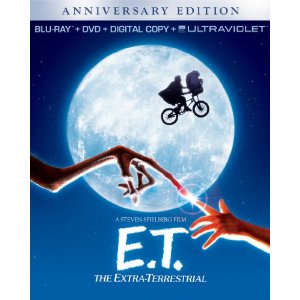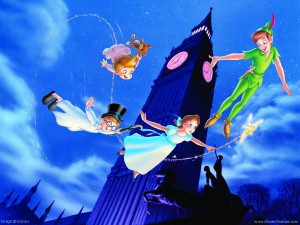Prepare for the final movie in the Harry Potter series by watching the first one again:
I loved it. And I can’t wait to see it again.
Based of course on the international sensation, the book by J. K. Rowling , “Harry Potter and the Sorcerer’s Stone” is filled with visual splendor, valiant heroes, spectacular special effects, and irresistible characters. It is only fair to say that it is truly magical.
, “Harry Potter and the Sorcerer’s Stone” is filled with visual splendor, valiant heroes, spectacular special effects, and irresistible characters. It is only fair to say that it is truly magical.
Fanatical fans of the books (in other words, just about everyone who has read them) should take a deep breath and prepare themselves to be thrilled. But first they have to remember that no movie could possibly fit in all of the endlessly inventive details author J.K. Rowling includes or match the imagination of readers who have their own ideas about what Harry’s famous lightning-bolt scar looks like or how Professor McGonagall turns into a cat. Move all of that over into a safe storage part of your brain and settle back with those who are brand new to the story to enjoy the way that screenwriter Steven Kloves, production designer Stuart Craig, and director Chris Columbus have brought their vision of the story to the screen. Even these days, when a six year old can tell the difference between stop-motion and computer graphics, there are movies like this one to remind us of our sense of wonder and show us how purely entertaining a movie can be.
Harry (Daniel Radcliffe), of course, is the orphan who lives with the odious Dursleys, his aunt, uncle, and cousin. They make him sleep in a closet under the stairs and never show him any attention or affection. On his 11th birthday, he receives a mysterious letter, but his uncle destroys it before he can read it. Letters keep coming, and the Dursleys take Harry to a remote lighthouse to keep him from getting them. Finally one is delivered to the lighthouse in the very large person of Hagrid, a huge, bearded man with a weakness for scary-looking creatures. It turns out that the letters were coming from Hogwarts, a boarding school for young witches and wizards, and Harry is expected for the fall term.
Hagrid takes Harry to buy his school supplies in Diagon Alley, a small corner of London that like so much of the magic world exists near but apart from the world of the muggles (humans). We are thus treated to one of the most imaginative and engaging settings ever committed to film, mixing the London of Dickens and Peter Pan with sheer, bewitching fantasy. A winding street that looks like it is hundreds of years old holds a bank run by gnomes, a store where the wand picks the wizard, and a pub filled with an assortment of curious characters.
Then it’s off to the train station, where the Hogwarts Express leaves from Track 9 ¾. On the train, Harry meets his future best friends, Ron (Rupert Grint) and Hermione (Emma Watson) and gets to try delicacies like chocolate frogs (they really hop) and Bertie Bott’s Everyflavor Beans (and they do mean EVERY FLAVOR).
And then things really get exciting, with classes in potions and “defense against the dark arts,” a sport called Quidditch (a sort of flying soccer/basketball), a mysterious trap door guarded by a three-headed dog named Fluffy, a baby dragon named Norbert, some information about Harry’s family and history, and some important lessons in loyalty and courage.
The settings manage to be sensationally imaginative and yet at the same time so clearly believable and lived-in and just plain right that you’ll think you could find them yourself, if you could get to Track 9 ¾. The adult actors are simply and completely perfect. Richard Harris turns in his all-time best performance as headmaster Albus Dumbledore, Maggie Smith (whose on-screen teaching roles extend from “The Prime of Miss Jean Brodie” to “Sister Act”) brings just the right tone of dry asperity to Professor McGonagall, and Robbie Coltrane is a giant with a heart to match as Hagrid (for me, the most astounding special effect of all was the understated way the movie made him look as though he was 10 feet tall). Alan Rickman provides shivers as potions master Professor Snape, and the brief glimpse of Julie Walters (an Oscar nominee for last year’s “Billy Elliott”) as Ron’s mother made me wish for much more. The kids are all just fine, though mostly just called upon to look either astonished or resolute.
A terrific book is now a terrific movie. Every family should enjoy them both.
Parents should know that the movie is very intense and has some scary moments, including children in peril. Children are hurt, but not seriously. There are some tense moments and some gross moments. A ghost character shows how he got the name “Nearly Headless Nick.” There are characters of many races, but all major characters are white. Female characters are strong and capable.
Families who see this movie should talk about what made the books so popular with children all over the world. Why did Dumbledore leave Harry with the Dursleys? Why did Harry decide not to be friends with Draco? Harry showed both good and bad judgment – when? How can you tell? What do you think are some of the other flavors in Everyflavor Beans?
Families who enjoy this movie will also enjoy The Wizard of Oz, Willy Wonka & the Chocolate Factory, and How The Grinch Stole Christmas.
DVD notes — this is one of the most splendid DVDs ever issued, with an entire second disk of marvelous extras including deleted scenes, a tour of Hogwarts, and CD-ROM treats.



